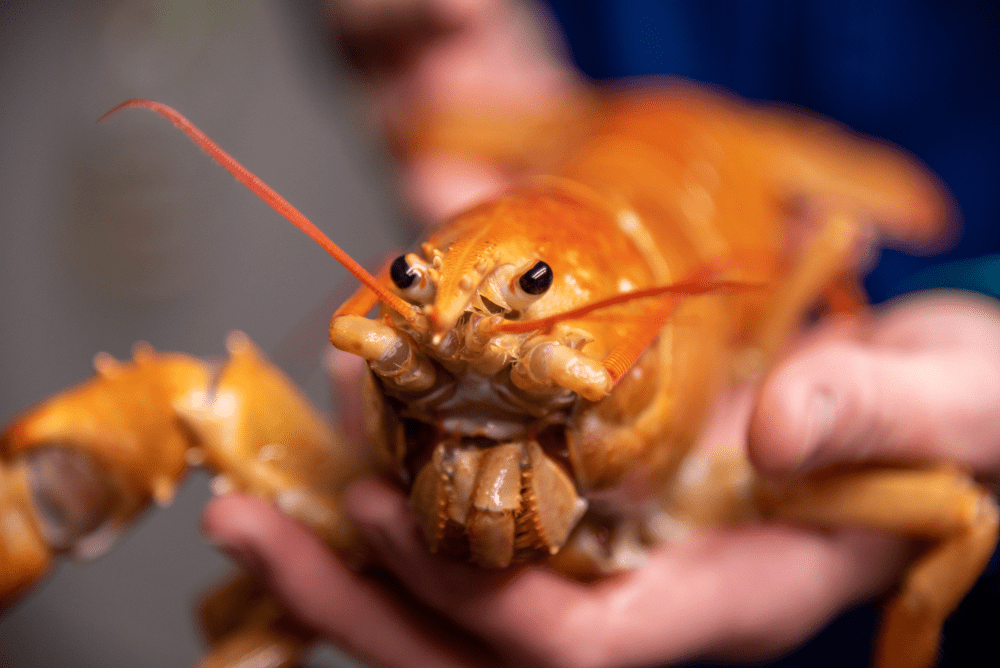You know you’ve made it when you land yourself on the mailing list for rare lobsters, and they don’t come much rarer than a recent addition to the technicolor lobster family that’s been gradually growing at the University of New England (UNE), Maine, US. The rare catch is bright orange, a variant that’s estimated to be a one-in-30-million catch, and now lives alongside fellow rare shiny Banana the lobster at the university.
The lobster was caught in Casco Bay by Captain Gregg Turner, a Scarborough fisher, and donated to UNE, which is known as a home for special crustaceans that could further our understanding. It represents a particularly interesting opportunity because it’s missing a claw, likely due to getting into a fight with fish or another lobster.
Being a one-clawed wonder gives students a chance to learn about limb regrowth, as lobsters can regenerate several limbs, as well as how lobsters adapt to injury.
“We plan to document the regrowth of this lobster’s claw in real time, something we’ve only done once before with Banana, our female yellow lobster,” said Lindsay Forrette, lab coordinator and chemical hygiene officer in UNE’s School of Marine and Environmental Programs, in a release.
“Rare lobsters, like this brilliant orange one caught by Turner’s Lobsters, are excellent ambassadors for education because they spark so much curiosity. Sharing these amazing animals with our students and visitors is a special opportunity that wouldn’t be possible without the Maine lobstering community all along the coast.”
The newest addition has already settled into her tank alongside Banana.
Image courtesy of UNE
Other rare lobster specimens come in yellow, blue, and white. The odds of catching a blue lobster are one-in-2-million, and both blue and yellow lobsters are the result of a genetic mutation in the proteins that bond with shell pigments.
Golden lobsters like this latest addition and Banana are only pipped to the rare lobster post by one-in-100-million “crystal lobsters” that have a pigment condition called leucism. Interestingly, they’re the only wacky lobster variety that don’t turn red when cooked, which in typical specimens is the result of shell proteins unwinding in the heat and releasing the pigment molecule astaxanthin.
Another worthy entry in the Top Trumps of weird lobsters is one specimen found in Nova Scotia, Canada, that sprouted an extra claw on its claw. Repetition of body parts is not uncommon in arthropods, which are characterized by their body blueprints of repeating segmented parts. Each segment has a set of regulatory genes that determine what appendages grow on that part, so when a surprise claw pops up in the wrong place it’s the result of a signaling error from the regulatory genes.
The latest golden wonder at UNE has yet to be named, but if Banana’s nomenclature is anything to go by, we can expect great things.
Source Link: Banana The Lobster Gets A Flatmate As UNE Scoop Another One-In-30-Million Crustacean
